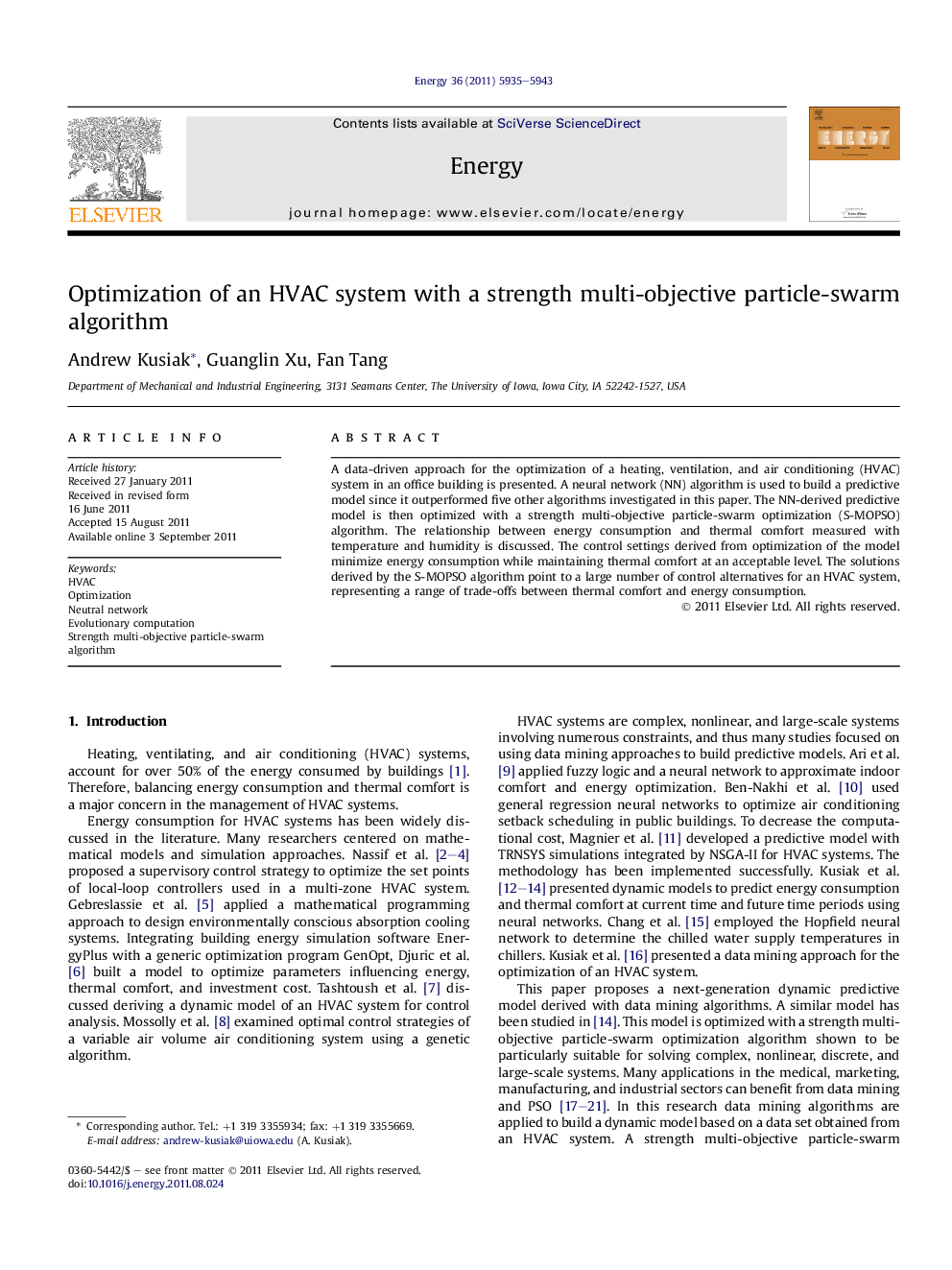| Article ID | Journal | Published Year | Pages | File Type |
|---|---|---|---|---|
| 1733999 | Energy | 2011 | 9 Pages |
A data-driven approach for the optimization of a heating, ventilation, and air conditioning (HVAC) system in an office building is presented. A neural network (NN) algorithm is used to build a predictive model since it outperformed five other algorithms investigated in this paper. The NN-derived predictive model is then optimized with a strength multi-objective particle-swarm optimization (S-MOPSO) algorithm. The relationship between energy consumption and thermal comfort measured with temperature and humidity is discussed. The control settings derived from optimization of the model minimize energy consumption while maintaining thermal comfort at an acceptable level. The solutions derived by the S-MOPSO algorithm point to a large number of control alternatives for an HVAC system, representing a range of trade-offs between thermal comfort and energy consumption.
►Optimization of a heating, ventilation, and air conditioning system in an office building is presented. ►Relationship between energy consumption and thermal comfort measured with temperature and humidity is discussed. ►Control settings derived from optimization of the model minimize energy consumption while maintaining thermal comfort at an acceptable level. ►The solutions derived in the paper represent trade-offs between thermal comfort and energy consumption.
